Available in JapaneseEnglish Genre J-pop | Development status Active Initial release date August 31, 2007 Platform Personal computer | |
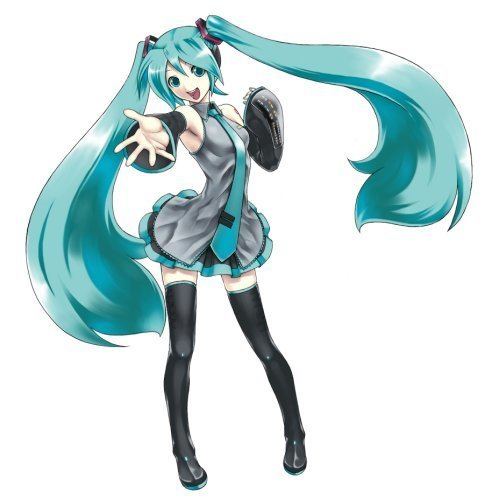 | ||
Stable release Hatsune Miku V4X / August 31, 2016 Operating system Type Vocal Synthesizer Application Similar Saki Fujita, Mitchie M, HoneyWorks, DECO*27, Supercell Profiles | ||
Vocaloid hatsune miku bach the well tempered clavier 2 bwv 878
Hatsune Miku (Japanese: 初音ミク), sometimes referred to as Miku Hatsune, is a humanoid persona voiced by a singing synthesizer application developed by Crypton Future Media. Hatsune Miku is portrayed as a 16-year-old girl with long, turquoise twintails. She uses Yamaha Corporation's Vocaloid 2 and Vocaloid 3 singing synthesizing technologies. She also uses Crypton Future Media's Piapro Studio, a singing synthesizer VSTi Plugin. She was the second Vocaloid sold using the Vocaloid 2 engine, and the first Japanese Vocaloid to use the Japanese version of the Vocaloid 2 engine. Her voice is modeled from Japanese voice actress Saki Fujita. Hatsune Miku has performed at her concerts onstage as an animated projection.
Contents
- Vocaloid hatsune miku bach the well tempered clavier 2 bwv 878
- Development
- Additional software
- Marketing
- Merchandising
- Good Smile Racing
- Winter festivals
- Characteristics
- Cultural impact
- Appearances in other media
- Featured music
- References
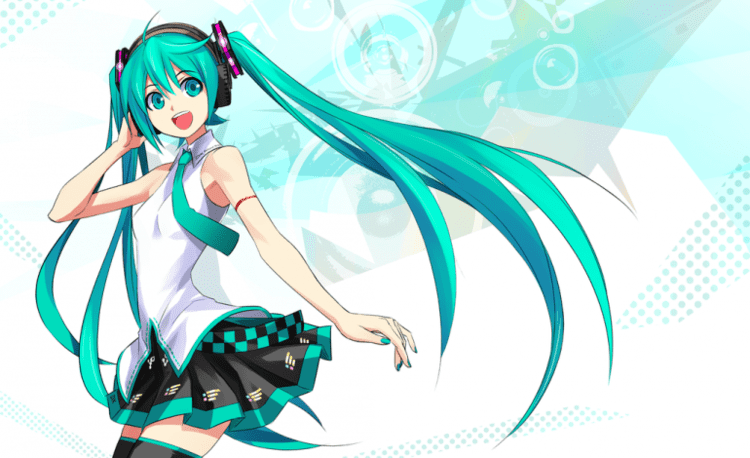
The name of the character comes from merging the Japanese words for first (初, hatsu), sound (音, ne) and future (ミク, miku), thus meaning "the first sound from the future", referring to her position as the first of Crypton's "Character Vocal Series."
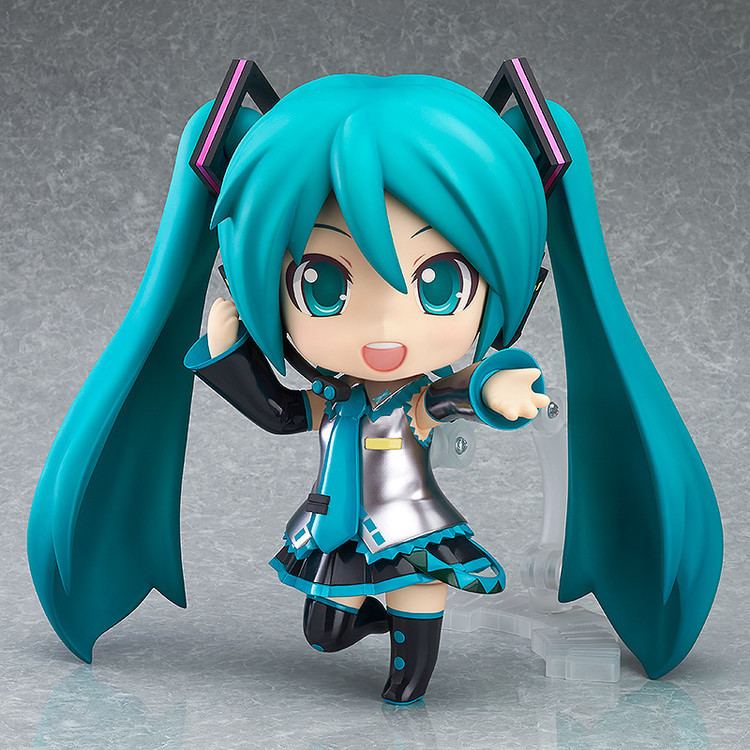
Development
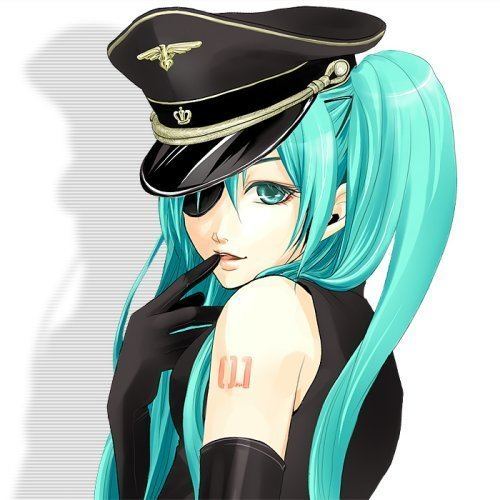
Hatsune Miku was the first Vocaloid developed by Crypton Future Media after they handled the release of the Yamaha vocal Meiko and Kaito. The name of "Hatsune Miku" was conceived soon after the Vocaloid 2 announcements, when an English and Japanese vocal were developed for the character. The intended design was delayed, and was later used for Megurine Luka instead. Miku was intended to be the first of a series of Vocaloids called the "Character Vocal Series", which included Kagamine Rin/Len and Megurine Luka. Each had a particular concept and vocal direction.
She was built using Yamaha's Vocaloid 2 technology, and later updated to newer engine versions. She was created by taking vocal samples from voice actress Saki Fujita at a controlled pitch and tone. Those samples all contain a single Japanese phonic which, when strung together, create full lyrics and phrases. The pitch of the samples was to be altered by the synthesizer engine, and was constructed into a keyboard style instrument within the Vocaloid software.

Crypton released Hatsune Miku on August 31, 2007. Crypton had the idea to release Miku as "an android diva in the near-future world where songs are lost." Hatsune Miku was released for Vocaloid 3 on August 31, 2013, including an English vocal library. She was the first Vocaloid to be developed by the company, following their commercial release handle of Yamaha Corporation developed vocals "Meiko" and "Kaito", making her the third Vocaloid to be sold commercially by the company.
Additional software
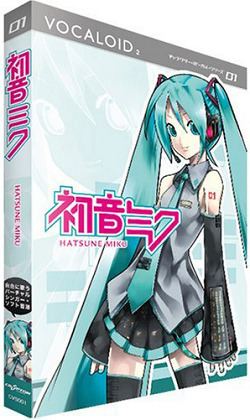
On April 30, 2010, a new add-on for Miku, called Hatsune Miku Append, was released containing a package of six different tones of Miku's voice: Soft (gentle, delicate voice), Sweet (young, chibi voice), Dark (mature, heartbroken voice), Vivid (bright, cheerful voice), Solid (loud, clear voice), and Light (innocent, heavenly voice). Miku Append was created to expand Miku's voice library, and as such requires the original program to be installed on the user's computer first. This was the first time a Vocaloid had such a release, and more Append versions were reported from Crypton Future Media at later dates.
It was mentioned that they had recorded a 7th Append vocal a "falsetto" voice, however, they had no plans to release the independent vocal such as this as they felt it wouldn't be useful. During the Kagamine Append development, a "darkish Whisper/Sweet" append was being considered. Miku's English vocal was also due for a Vocaloid 2 release, but due to low quality it was not released in the engine for this reason.
To aid in the production of 3D animations, the program MikuMikuDance was developed as an independent program. The freeware software allowed a boom in fan-made and derivative characters to be developed, as well as being a boost for promoting the Vocaloid songs themselves. MikuMikuDance animations of songs were also put into the well known "NicoNico Cho Party", allowing fans to have their animations projected in concerts. Another Vocaloid tool that was developed was VocaListener, a software package that allows for realistic Vocaloid songs to be produced.
An English singing version of Hatsune Miku was announced in 2011, and was to be released by the end of 2012. However, the decision to move to Vocaloid 3 and issues with English pronunciation delayed the release. It was released on August 31, 2013 via digital distribution.
The Hatsune Miku Vocaloid 3 Japanese vocal library was released on September 26, 2013. It contained updates to all previous Vocaloid 2 vocals except "Vivid" and "Light". These vocals were later released separately, though were initially offered for anyone who owned Hatsune Miku, Hatsune Miku Append and Hatsune Miku V3. Once imported into Vocaloid4, all Vocaloid3 Hatsune Miku vocals could use the new Cross-Synthesis system (XSY) built for the new engine. The voice was also imported into a device called "Pocket Miku" released on April 3, 2014.
Wataru Sasaki, one of the main developers of Hatsune Miku, shared on Twitter that Hatsune Miku will receive an update for Yamaha's Vocaloid 4 engine under the name of "Hatsune Miku V4x". It will make use of the new EVEC system for Piapro Studio, a VSTi plugin used as an alternative to the traditional Vocaloid Editor. EVEC consists of recorded vowels. Along with the consonant, a different vocal tone can be achieved. Two vocal tones are included in the EVEC system: Power and Soft, but more are being planned. Along with the new EVEC system, phoneme errors found in Miku's V2 and V3 voicebanks would be fixed allowing for easier manipulation of her voice. Miku's Original V4x is currently in public beta. A trial is available, but the user must own legal copies of both Miku V3 as well as Megurine Luka V4x.
Marketing
Miku has been heavily promoted since 2008 and was originally aimed at professional musicians. On September 12, 2007, Amazon.co.jp reported sales of Hatsune Miku totaling 57,500,000 yen, making her the number one selling software of that time. She was the first vocal to be developed and distributed by Crypton Future Media and sung in Japanese. Her instant success is owed to Vocaloid being a cultural hit in Japan and she reportedly sold 40,000 units by July 2008, selling on average 300 units a week. By Jan 2011, she had sold 60,000 units.
Merchandising
Since the success of her Vocaloid 2 package led to an expansion of marketing possibilities, most of the mass marketing has come after her initial release as a response to her popularity and has been on going since 2008. Even with the addition of other Character Vocals, Miku's name continues to be used as the primary source of marketing for Crypton Future Media, to the point where most products for their Vocaloid related products will usually only feature Hatsune Miku's name. In March 2012, the Nomura Research Institute estimated that the sales of all Hatsune Miku brand goods added up into the region of ¥10,000,000,000 since her release in 2007. Her name is easily the most recognizable of all Vocaloids.
In 2011, Crypton began to focus on marketing Miku to United States audiences. On May 7, Amazon placed a preview of Supercell's hit song, "World is Mine", as a single. When the song finally went on sale, it ranked at No. 7 in the top 10 world singles list on iTunes in its first week of sales. Since Crypton had always sold Miku as a virtual instrument in Japan, they asked their Japanese fan base if it was acceptable for them to sell her as a virtual singer to the new market audience. The main purpose of the Miku English version is to allow Japanese producers to break into the western market and expand their audiences.
Good Smile Racing
In 2008, Good Smile Racing began the licensing of Hatsune Miku and other Crypton Future Media related Vocaloid content. Studie, which participated in the 2008 and 2009 seasons using a BMW Z4 E86. Their car was painted in official Hatsune Miku art, and fan-derivative versions of Hatsune Miku in some races in the 2009 season. In addition for the 2008 season a group of Racing queens were seen in the pitstop of races. Dubbed the "MikuMiku Gals", the three girls were Rin Miyama, Riona Osaki and Hina Sato. In 2009 a new set of MikuMiku Gals were introduced; these girls wore outfits based on all three Character Vocal series females and not specifically Hatsune Miku alone. Hiroko Nagano, Atsuko and Ayami were the Racing Queens for the season.
Team COX, participating in the 2010 season, which uses a Porsche 996 GT3 RSR (and will use a Porsche 997 GT3-R). Their car uses Racing Miku (an official Hatsune Miku derivative, wearing an orange race queen suit) as their image. 2010 was also the first season to receive the first official "Racing Miku" derivative design and from this season onward the Racing Queens outfits were based on the seasons derivative design. The designer of the 2010 outfit was illustrator Redjuice. Model ayami returned for this season as a Racing queen and was joined by fellow models Saki Tachibana and Shihomi Kogoshi.
GSR and Studie with TeamUKYO was the sponsorship for the 2011 season. The designer of the 2011 Racing Miku derivative design was illustrator Yuichi Murakami. Model Ayami returned as a Racing Queen for the third time and Tachibana Saki returned for her second season. Haruka Aoi was the third Racing Queen to wear the Racing Miku 2011 outfit. GSR and Studie with TeamUKYO was continued as a sponsorship for the 2012 season. The Racing Miku design was illustrated by Gan for this season. The Racing queens for the season were returning models Tachibana Saki and Aoi Haruka, as well as new models Sena Kougami and Ayana Sato.
Once again the GSR and Studie with TeamUKYO sponsorship continued with the 2013 season . The Racing Miku design for the season was done by Mari Shimazaki. The illustrator of the official art was Saitom. Sena Kougami returned as a racing queen for this season and was joined by Tsukasa Arai and Elena Ishiguro. In 2013, the Sponsorship was expanded to featured a racing outfit in the Isle of Man motor cycling race, for this race Team Mirari were sponsored and a special design for the Racing Miku design adapted to suit the different spot. The Racing Miku design also was adapted for a "Sepang" version showing bare toned skin as part of showing good health and promoting the design as "the Angel of summer".
The illustrator for the 2014 season was Oguchi, one of the 15 artists of Kantai Collection. The outfit is designed by Koyamashigeto, the art director of Kill la Kill. The machine version of the outfit is designed by Koyamashigeto and Shōji Kawamori, who is noted for his "Macross" designs. The Racing Queens who wore the outfit were returning models Tsukasa Arai and Sena Kougami, as well as new models Kelal Yamaura and Noa Mizutani. For the 2015 Racing Miku, the design was based on a "Princess Knight" complete with a shield and spear-like umbrella. The illustrator was Taiki, the lead visual design from Square Enix and Sega's games Lord of Vermilion and Rise of Mana. Koyamashigeto once again returned as the art direction and designer for the season. Tsuyoshi Kusano is in charge of the new machine design.
Winter festivals
Sapporo has been a major main target of sponsorship since 2010 with Crypton Future Media sponsoring the winter festivals. The image of Hatsune Miku would appear around the town on the public transport. The image portrayal of Miku that is used is a derivative design called "Snow Miku", originally this was simply a recolour of the normal Hatsune Miku, unique designs have occurred every year since 2011. Figurines based on the design have also been featured.
The 2012 design was chosen via a contest. The winning entry was referred to as "Fluffy Coat Snow Miku". The 2013 design was called "Strawberry Daifuku Shiromuku Miku". The 2014 design was based on a Magical Girl design by dera_fury, who was the winner of the 2014 Snow Miku contest. The illustration was "Nekosumi". The design also featured a pet called "Rabbit Yukine". The 2015 design was called "Snow Bell Snow Miku" and was illustrated by Nardack.
In 2012, several ice sculptures of the Character Vocal series and several snow sculptures of Miku were produced for the event. However, on February 7, 2012, one of the Snow Miku sculptures later collapsed and had to be rebuilt elsewhere with better support. The collapsed figure also hit a woman in her early 60s on the back of the head; no serious injuries were sustained in the process.
Characteristics
During Miku's development, Crypton decided to take a different approach from that used by the other Vocaloid sound bank publishers. It was decided that to make the product successful not only would a highly appealing voice need to be developed, but that the voice needed an image. She was originally aimed only at professional producers; the amateur and otaku market had not fully formed yet, and so were not initially considered.
The task for coming up with Miku's image went to the manga artist Kei Garō. When Kei designed Miku, his only direction was that she was an android and what her color scheme (based on Yamaha's synthesizer's signature turquoise color) was. The design on Miku's skirt and boots are based on synthesizer software colors and the bars represent the actual bars within the program's user interface. Miku was originally intended to have a different hairstyle, but Kei stuck to pigtails or bunches after trying them out. Crypton then officially created and posted Miku's personal data sheet. However, this only contained her 'physical' and technical traits; Crypton did not provide much info in the way of Miku's personality which has allowed song/music video creators and fans to associate the traits that they think suit her best.
Cultural impact
Nico Nico Douga, a Japanese website similar to YouTube, played a fundamental role in the recognition and popularity of the software. Soon after the release of Miku, users of Nico Nico Douga started posting videos with songs created using her sound bank. According to Crypton, a popular video with "Hachune Miku", a super-deformed Miku, holding a Welsh onion (similar to the Loituma Girl) and singing "Ievan Polkka" (which led to Miku also being commonly associated with leeks/spring onions), presented the varied potential of applying the software in multimedia content creation. As the recognition and popularity of Miku grew, Nico Nico Douga became a place for collaborative content creation. Popular original songs written by a user would inspire illustrations, animations in 2D and 3D, and remixes by other users. Some creators would show their unfinished work and ask for ideas.
In September 2009, three figurines based on the derivative character "Hachune Miku" were launched in a rocket from the United States state of Nevada's Black Rock Desert, though it did not reach outer space. In late November 2009, a petition was launched in order to get a custom-made Hatsune Miku aluminium plate (8 cm × 12 cm, 3.1" × 4.7") made that would be used as a balancing weight for the Japanese Venus spacecraft explorer Akatsuki. Started by Hatsune Miku fan Sumio Morioka (also known as "chodenzi-P"), this project has received the backing of Dr. Seiichi Sakamoto of the Japan Aerospace Exploration Agency. On December 22, 2009, the petition exceeded the needed 10,000 signatures necessary to have the plates made. An original deadline of December 20, 2009 had been set to send in the petition, but due to a couple of delays in the Akatsuki project, a new deadline of January 6, 2010 was set; by this deadline, over 14,000 signatures had been received. On May 21, 2010 at 06:58:22 (JST), Akatsuki was launched, having three plates depicting Hatsune Miku and Hachune Miku in several monochrome images, composed of the miniature letters of the messages from the petition form etched in the plates. The UK 59th issue of the music and fashion magazine Clash featured Hatsune Miku as their cover star (using a real-life photo model), with a full feature on her.
The Vocaloid software has also had a great influence on the character Black Rock Shooter, who looks like Hatsune Miku but is not linked to her by design. The character was made famous by the song "Black Rock Shooter", and a number of figurines have been made. An original video animation made by Ordet was streamed for free as part of a promotional campaign running from June 25 to August 31, 2010. A televised anime series aired in February 2012.
In October 2011, Crypton showed on the official Hatsune Miku Facebook page a letter from the Japanese Minister of Economy for "contributing to the furtherance of the informatization by minister of economy." Geoffrey Cain of GlobalPost has argued that the phenomenon of Hatsune Miku is partly due to the love of Japanese for giving inanimate objects a soul, which is rooted in Shintoism or animism, but also in the long tradition of Karakuri ningyō or automated wooden puppets. Thus, Japanese are much more ready to accept a virtual character as "human".
Appearances in other media
Miku's popularity has seen various references to her in anime. Miku is the protagonist of a manga series named Maker Hikōshiki Hatsune Mix, written by Kei Garō. The manga explores the many possibilities of story-telling and has featured numerous adventures, ranging from giant-sized battles with Hatsune Miku to home exploits. There is therefore no single storyline and the entire setting within the manga is unofficial. During an episode of Zoku Sayonara, Zetsubou Sensei, Miku is seen auditioning for the voice of Meru Otonashi (Kagamine Rin and Len are referenced in the same episode). Miku's voice is used in one of the ending themes for the anime series Akikan! (episode 12). Moreover, she also sings the ending theme for the anime Yamishibai: Japanese Ghost Stories, called "Kaikai Emaki" (怪々絵巻). During an episode in the Lucky Star OVA, Kagami Hiiragi gets magically transformed into Miku cosplay. A character in the anime Kämpfer appears dressed as Miku in episode seven. She also appeared in the large plasma screen in Chrome Shelled Regios as an endorser. She also appears in episode 11 of Baka and Test as a member of class B. Miku also appears in Maria Holic episode 12, when the class is told they have a swim meet. Miku also appears in episode 1 of Himōto! Umaru-chan, in an imagination of what the main character wants to buy. A parody of Miku is also seen in Gintama (episode 237) in the second editor of Gintaman, Daito's anime fantasies.
A series of rhythm games starting from Hatsune Miku: Project DIVA were produced by Sega under license using Hatsune Miku and other Crypton Vocaloids, as well as "fan-made" Vocaloids like Akita Neru. TinierMe also made attire that looks like Miku's for their services, allowing users to make their avatar resemble her. Hatsune Miku and Future Stars: Project Mirai was developed for the Nintendo 3DS. Miku's appearance in this game is based on the Nendoroid series of figures. Hatsune Miku is also briefly referenced in the game Recettear, where a young man stargazing sees "The Green-Onion Girl" constellation. Also, in 2013, Saki Fujita voices Fei-Yen HD, a character based on one of Hatsune Miku's modules, in Super Robot Wars UX; this appearance does not use Miku's vocal library.
Miku's clothes appear as a costume for a playable character in the Japanese version of PangYa and was the back-up vocal for the game's season four trailer, as a downloadable costume for Sophie in Tales of Graces and is seen during a stage in the game 13-sai no Hellowork DS. Miku's clothes also appear in Phantasy Star Portable 2 as a costume for the player's female character, as well as her hairstyle and leek-themed weapons. Miku appears in the PlayStation 3 version of The Idolm@ster 2 as downloadable content. In the video game Skullgirls, one of Filia's alternate colors is based on Miku. Miku has appeared as downloadable content using the game engine M.U.G.E.N. Hatsune Miku's attire has also appeared in Phantasy Star Online 2 as a female character's costume, along with "Miku Dayō" as a Mag Design. She also makes an appearance in the game Brave Frontier.
In 2014, Korg introduced "Miku Stomp", a guitar effects unit that emulates the sound of Miku's voice. In 2015, "Ievan Polkka" was announced to appear in Just Dance 2016 along with a dancer whose outfit is exactly like Miku's. On July 23, 2015, Miku was announced as a DLC character in Persona 4: Dancing All Night, a video game released in 2015 for the PlayStation Vita and developed by Atlus. On November 26, 2015, Miku became a collaboration idol for the second update of the 2016 series of the Aikatsu! arcade game. Several cards containing Hatsune Miku uniforms were also included for the update. In 2016, a remix of "Ievan Polkka" appeared on an LG G5 commercial. "PoPiPo" was announced to appear in Just Dance 2017 also with a dancer whose resembles Miku.
Featured music
In August 2010, over 22,000 original songs had been written for Hatsune Miku. Later reports confirmed that she had 100,000 songs in 2011 to her name. Crypton's website promotes Miku's popularity having her voice used in over 100,000 unique songs.
One of the Vocaloid compilations, Exit Tunes Presents Vocalogenesis feat. Hatsune Miku, debuted at number-one on the Japanese weekly Oricon album charts dated May 31, 2010, becoming the first Vocaloid album ever to top the charts. Another album, Supercell, by the group Supercell also features a number of songs using Vocaloids. Other albums, such as 19's Sound Factory's First Sound Story and Livetune's Re:package, and Re:Mikus also feature Miku's voice. Other uses of Miku include the albums Sakura no Ame (桜ノ雨) by Absorb and Miku no Kanzume (みくのかんづめ) by OSTER-project. She had sung the original Nyan Cat called "Nyanyanyanyanyanyanya!" by daniwell-P. Kagamine Len and Rin's songs were covered by Asami Shimoda in the album Prism credited to "Kagamine Rin/Len feat. Asami Shimoda". Another song original sung by Miku, "Color", was covered by Maria, and featured as the opening theme of the 2011 anime series Freezing.
As a virtual idol, Hatsune Miku performed her first "live" concert during Animelo Summer Live at the Saitama Super Arena on August 22, 2009. Miku later returned to Animelo Summer Live 2012: Infinity to perform "The World is Mine" and "Tell Your World". Miku also performed her first overseas live concert on November 21, 2009, during Anime Festival Asia (AFA) in Singapore. On March 9, 2010, Miku's first solo live performance titled "Miku no Hi Kanshasai 39's Giving Day" was opened at the Zepp Tokyo in Odaiba, Tokyo. Miku performed in the United States on July 2, 2011 at the Nokia Theater at L.A. Live during the 2011 Anime Expo in Los Angeles. The concert followed the same format as the previous "39's Giving Day" concert. Hatsune Miku performed in Japanese rock festival Summer Sonic 2013 on August 10, 2013. Hatsune Miku teamed up with designer Louis Vuitton and director Toshiki Okada for a Vocaloid opera, titled The End. It featured no human singers and took place at the Theatre du Chatelet Opera House in Paris on November 13 and 15, 2013.
A young male prototype used for the "Project If..." series was used in Sound Horizon's musical work "Ido e Itaru Mori e Itaru Ido", labeled as the "prologue maxi". The prototype sang alongside Miku for their music and is known only by the name "Junger März_Prototype β". Hatsune Miku was the opening act for Lady Gaga's world tour ArtRave: The Artpop Ball, performing throughout the first month of her tour from May 6 to June 3, 2014.
In March 2014, Hatsune Miku and Crypton Future Media teamed up with the Japanese band Bump of Chicken to record a music video featuring a real band singing alongside Hatsune Miku in real-time. This video was uploaded on March 12, 2014, and contains the song "Ray". The video is not after-edited in any way. This was made possible by Crypton's newest technology to focus characters on a screen directly to the recording camera by using a big curved screen, motion data, Wifi-sensors, movement-sensors and some older technology from Crypton.
Pharrell Williams made a remix of Livetune's song "Last night, Good night" featuring Hatsune Miku. On October 8, 2014, Miku made her American network television debut as she performed "Sharing the World" on the Late Show with David Letterman on CBS. Hatsune Miku is featured in "B Who I Want 2 B" produced by Sophie from Namie Amuro's album Genic. The 2016 Hatsune Miku Expo tour featured American electronic band Anamanaguchi as an opening act; to commemorate the tour, the band recorded a single track titled "Miku", which they performed live on the tour with Miku as an encore song.
